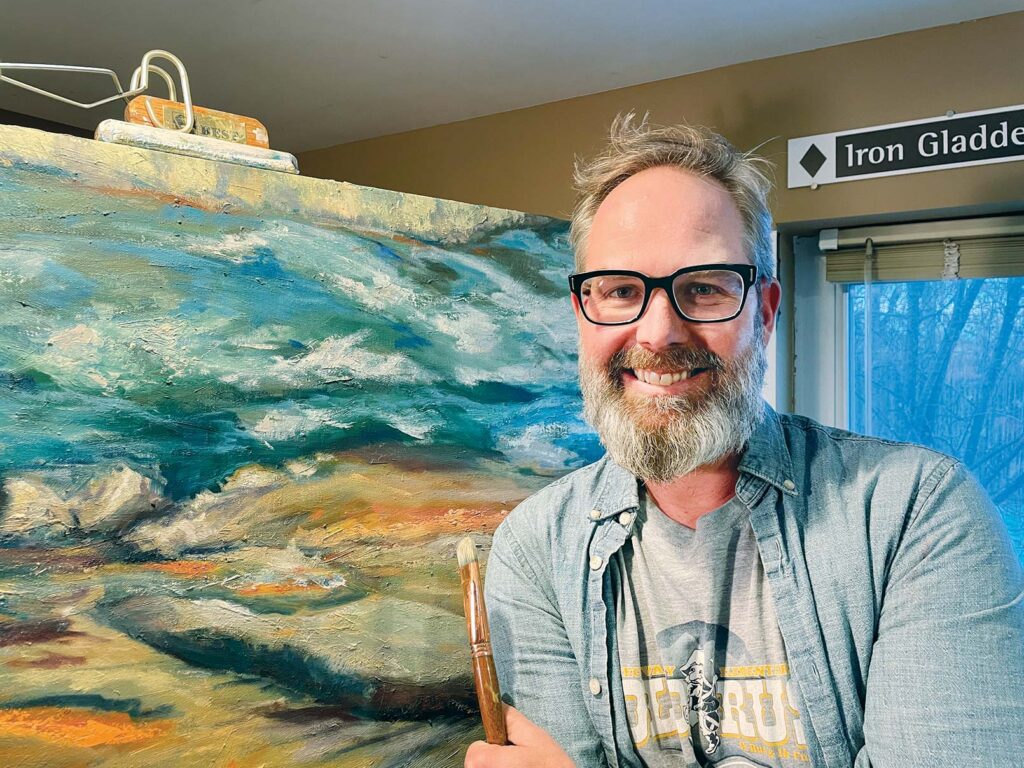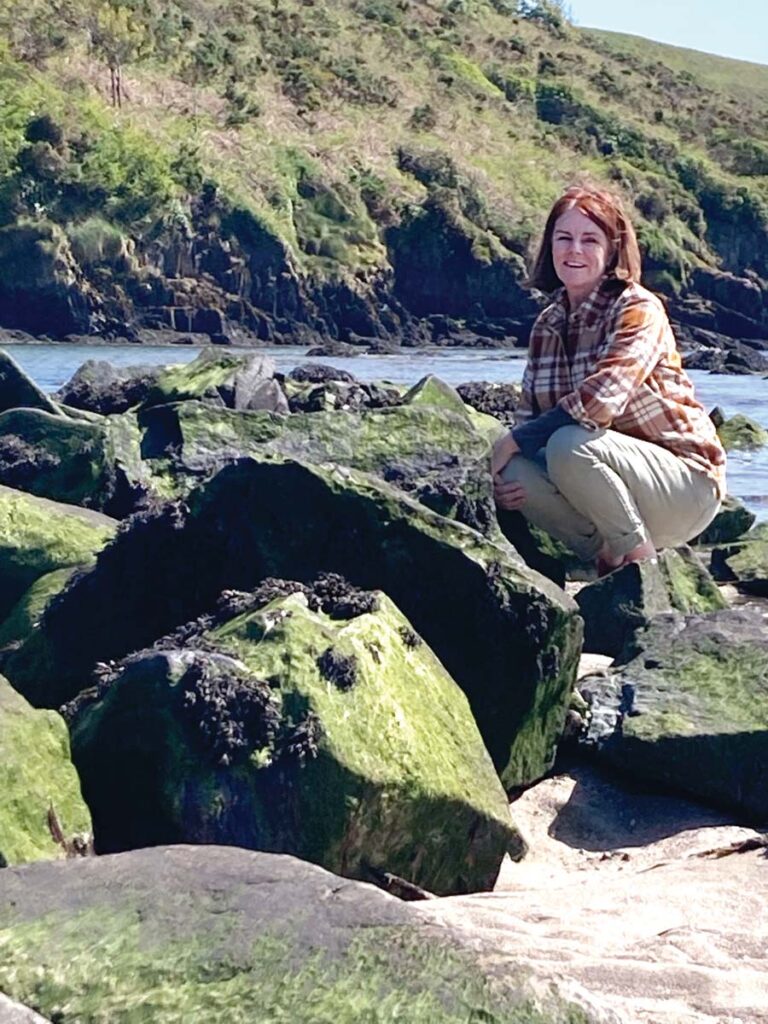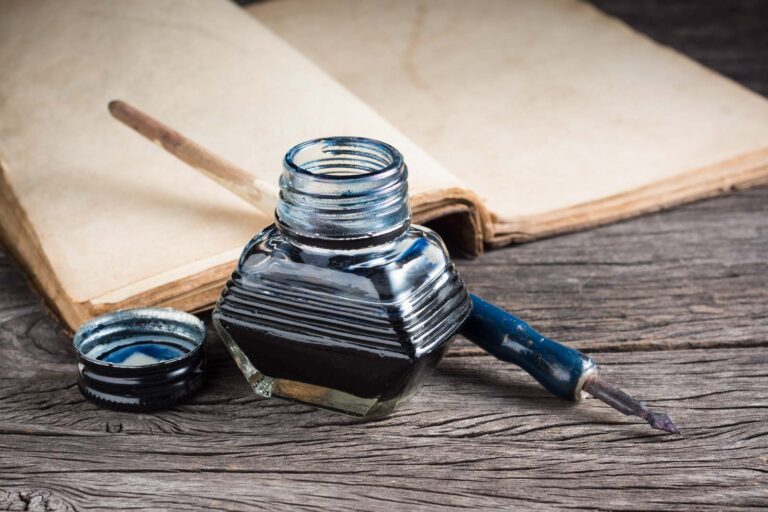“Painting from landscape is another way to express the experience of humanity the only way I can: as a six-foot male walking on land. That is my perspective,” says Wheat Ridge painter Jason McCullough.
He captures the people and spaces that inhabit his experience. Working in oil paints and various drawing mediums, the self-represented fine art painter produces plein air, landscape and portrait work.
McCullough, 48, visits many different landscapes with his palette to do plein air (outdoor) painting.
“I like the idea of being out in the world, recording a scene that will never be exactly like this again,” he said. “My paintings are like original snapshots, unique like a fingerprint, a record of where I was in the landscape at that moment. I used to fly fish, but I never caught anything. So now I paint while friends fish. I’m much happier coming home with a painting.”
McCullough and his wife Andrea have two sons: Wyatt, 16, and Liam, 12. He works at Brothers Redevelopment, a nonprofit in Edgewater that provides housing and housing-related services for low-income people. He is a program director in home modification and repair for senior homeowners.
McCullough painted in more of an abstract style before turning to landscape painting in 2017.
“I became interested in conservation because our biggest problem is climate change. Nothing else matters if we can’t breathe.
“I realized that humans have an intense and intrinsic connection to the land. We are forever connected to the land. It is where we come from and what we belong to. In our memories are the people we love, but we always sense location. Everything takes place somewhere. We need grounding. The landscape is a basic sense memory. It’s why we’re not good in space: we need the orientation of up and down.”
The son of an FBI agent, McCullough was born in Ucon, Idaho.
“I have drawn and painted since before I can remember,” he said. “I remember drawing a bobcat face in pastels in junior high. I got in trouble because I drew on my homework. I did the best in my art classes and I wanted to know everything.”
He took lessons in oil painting at age 14 and 15, working from photos.
“It was more regimented than I liked, but it helped to learn about portraiture, as well as colors and how to gesso [prepare] a canvas. I learned some contemporary history about why people make art.”
McCullough moved to Colorado in 1991, his senior year. He studied painting, printmaking and art history at Colorado State University and graduated in 1998 with a bachelor’s degree in fine art. After spending some time in New Mexico, he married Andrea and they moved to Seattle where they had their first child.
“After we had our first son, we needed family support, so we moved back to Colorado. Andrea had lived in Wheat Ridge before, and she thought it was the best place for us.”
McCullough’s wife and sons are his favorite subjects for portraits.
“My sons’ portraits show them when they were younger, when they were more patient about sitting for me. I painted Andrea holding the baby the day after he came home from the hospital. Children are so vulnerable when they are that small; it was real life.”
When he first got into landscape painting, McCullough worked from photos, but found that “not exciting.” His friend John Lintott, a painter of Western landscapes, suggested he try plein air.
“The main challenge with plein air painting is that your time is limited because the light changes so quickly. I get maybe 45 minutes to get it out there and do a quick color study, then I go back to my home studio to fill in the details and emotions.”
He often paints the same landscape in different seasons and times of day.
“Some places I paint many times until I get it right. At early morning or dusk there are more shadows, and the light is more dramatic. You get about 15 minutes to capture it. It’s lightning in a bottle.”
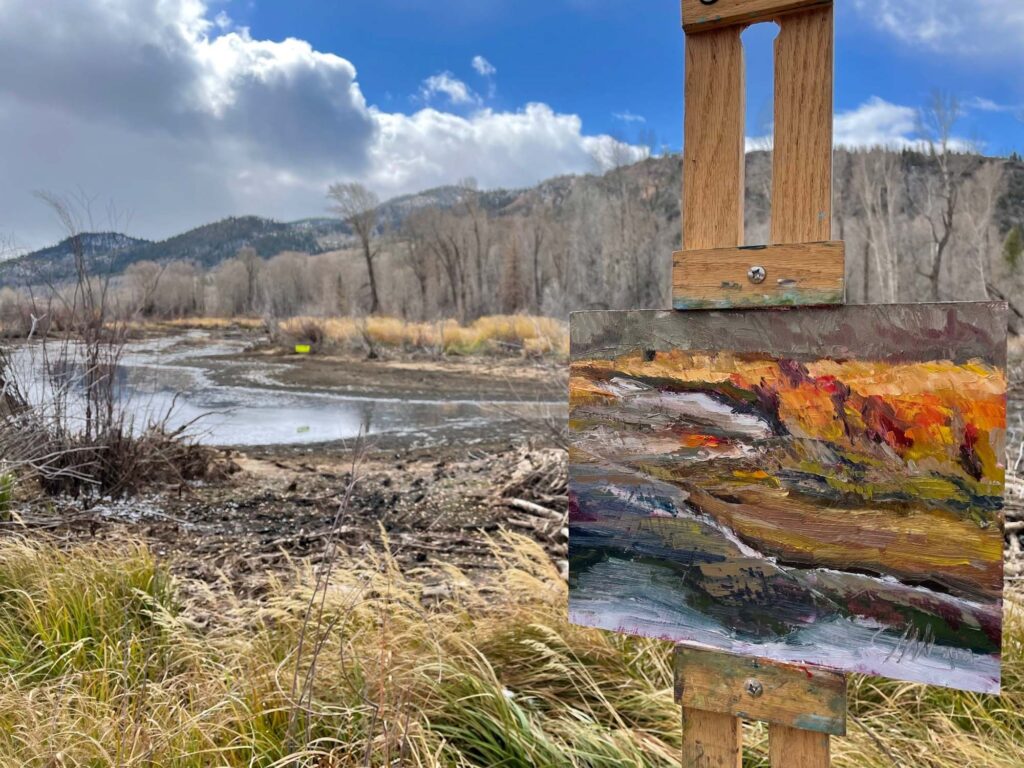
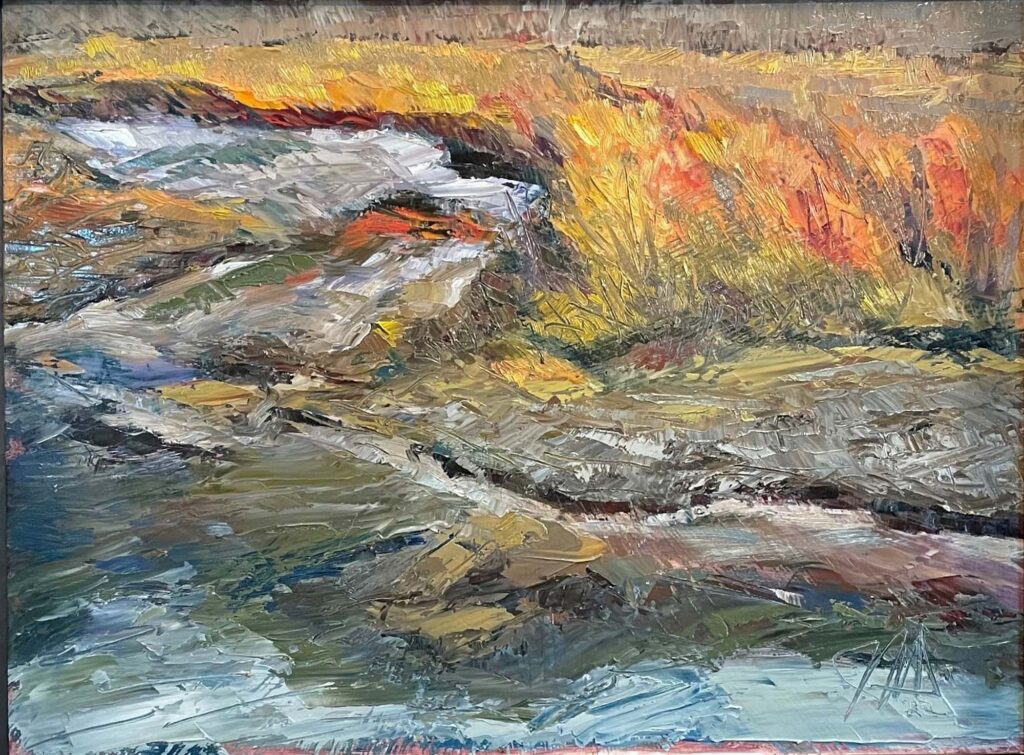
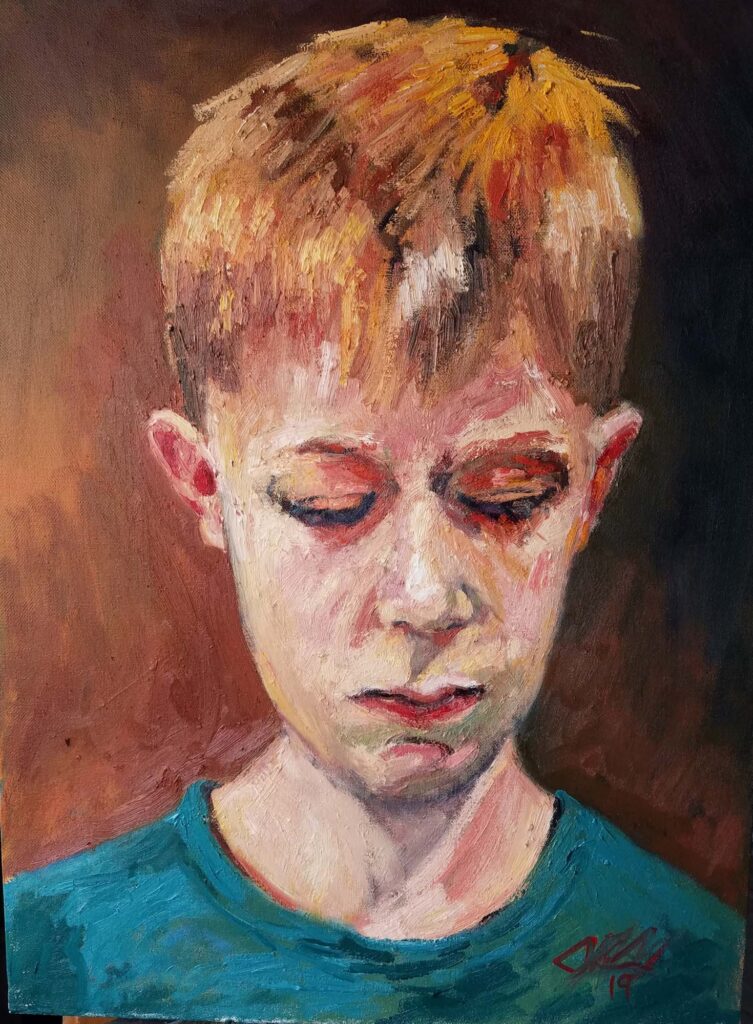
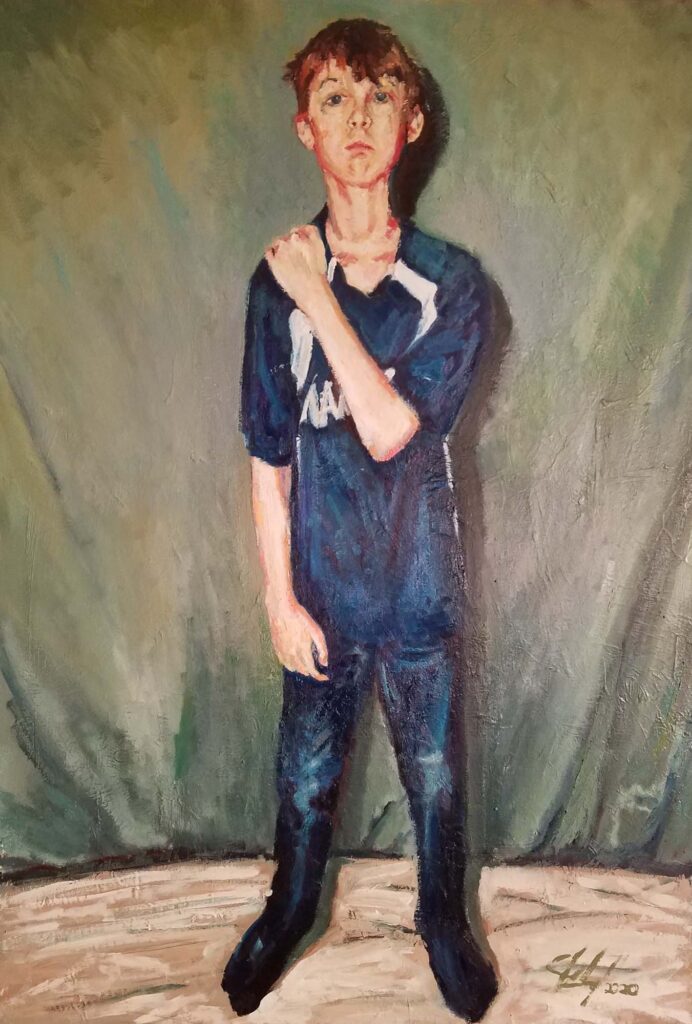
McCullough’s colors often appear more vivid than in the actual landscape.
“When I walk by a landscape, I see it one way. But when I sit and study it, I see the colors pop out. So they come out more vivid in the painting because what I see is all about perception. I like to use a lot of paint, to let the paint tell the story as well.”
McCullough mixes all his own colors.
“I use relatively few basic colors and mix everything. None of my colors are straight from the tube. That way I can control the chroma (saturation), hue and shade (cooler or warmer). I play with the colors, with where the light is coming from. Sometimes I get a happy accident and sometimes not. I used to get frustrated but now I embrace it. I don’t focus on the paintings that don’t work out. The learning curve never ends. Now that painting is the culmination of all I’ve learned, it feels good.
“Being able to put the moment somewhere you can save and review it is amazing, it’s a special power. Paintings don’t lie; they are an honest view of what I saw. I am forever grateful to have lived a life of observation.”
See more of Jason McCullough’s work at: jasondmccullough.com

